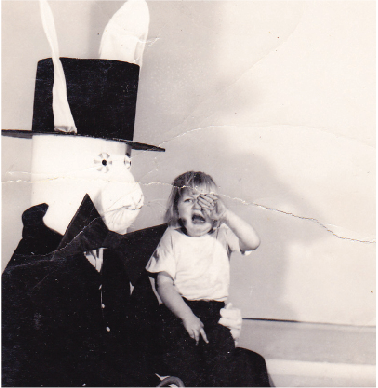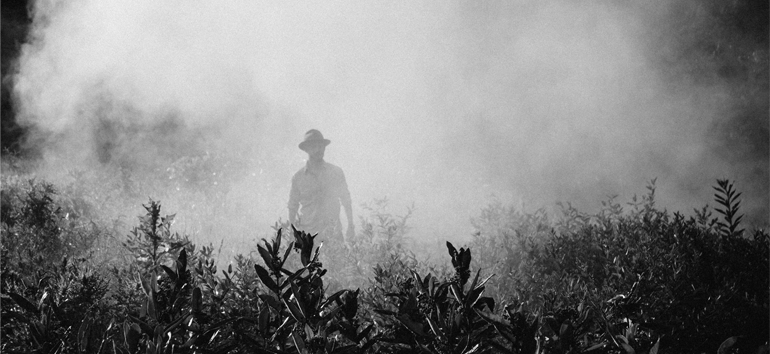Sign up for the Family Tree Newsletter! Plus, you’ll receive our 10 Essential Genealogy Research Forms PDF as a special thank you.
Get Your Free Genealogy Forms
"*" indicates required fields
It was 1932. As the saying goes, times were tough. We always had a car so my father could develop his new fire equipment business. We always had something to eat and a warm, dry place to live. But being in business for yourself was an uncertain life. The income, if there was any, fluctuated with the season, the economy and a million other factors. My mother wasn’t happy with this. She would have preferred that my father’s job come with a steady paycheck and set hours.
One day we stopped at the gas station while driving around doing errands. My father had just taken a piece of gum out of his pocket. When he reached into his pocket again to pay for the gas, the $5 bill that had been there was gone. There must have been a moment of fumbling, then panic. My mother shouted in a strangled voice that he must have accidentally thrown it out with the gum wrapper. We sped away, leaving the station attendant there in shocked surprise.
We hurried back to the street where Dad threw away the wrapper (how had he even remembered?). There on the curb was a man hosing leaves from his yard as his wife stood in the street sweeping the water and leaves into the sewer. Mother took in the situation at a glance and somehow spotted the $5 bill bobbing along with the current. She wasn’t especially graceful, nor was she the assertive type used to taking immediate action. Rather, she was shy and tended to hesitate. But this was the last $5 bill. Who knew where the next one would come from?
Before the car came to a stop, she threw the door open, sprinted a few steps and snatched up the bill just as it was poised on the lip of the drain. The woman who was innocently hastening our trip to the poorhouse stood in amazement as the little drama played out before her. Mother returned to the car with the dripping money and we went to pay for our gasoline.
Charlotte Dunn » San Diego
ADVERTISEMENT
Back in a Flash
When I was a child, my mother told me her maternal grandfather was killed by lightning, along with a young daughter. The story, especially the girl, intrigued me. As an adult, I uncovered the details through Henry O’Brien’s 1909 obituary. I had misunderstood: 12-year-old Essie didn’t die with her father; she’d been struck 17 years earlier.
Essie was buried near Garner, Iowa, where the family lived. Henry’s grave was in St. Patrick’s Cemetery near Britt, Iowa, where he had farmed. His wife, Bridget McLaughlin O’Brien, died in 1913 and was buried beside him. A year later, Alice Hahn joined her parents there. A small metal plate marked each grave, though Henry’s and Bridget’s birth years were incorrect.
More than 100 years later, the O’Briens’ great-great-grandchild Dawn Foley Huisenga found the markers cast aside. She returned them to their proper place. At a family reunion, she began a collection to purchase a permanent headstone with all three names.
ADVERTISEMENT
Bridget O’Brien “suffered intensely for five months with cancer,” reported her obituary. “Her faithful companion at all times was her rosary and her crucifix. She made a request of one of her daughters to have a white lily and a crucifix in her hand when she was buried.”
Dawn requested a headstone with a rosary wrapped around a crucifix, and a lily. On Memorial Day weekend 2011, three generations of Foleys traveled to Britt to dedicate the headstone. The sky loomed overcast and rain fell in the morning—a reminder of the afternoon when, seven miles away, a farmer in the harvest field “was hurled from this earth to eternity.” But sunshine broke through as the group of 14 gathered at the gravesite. Dawn read Henry’s and Bridget’s obituaries, and Mary Foley Palmer offered a prayer, “The commandments remind us to honor our mother and father, and we are honoring our great-great-grandparents with our ceremony today.” The relatives then held hands and recited the Lord’s Prayer.
Cynthia Ramirez, daughter of the Foley family patriarch, wondered what her ancestors would think. “A hundred years later, their great-, great-great-, and great-great-great-grandchildren dedicating a headstone for them. It was a proud feeling,” she says. “I believe they were looking down and smiling on us. ”
Another relative, who didn’t attend, shared the story, and now her granddaughter wants to do a family tree.
An old adage claims that people are less afraid of dying than they are of being forgotten. Thanks to devoted genealogists in every generation, many of us have not—and will not—be forgotten.
little girl whose instincts are telling her to run screaming. The reader who explained it in a
clever photo caption wins Good Old Days, My Ass: 665 Funny History Facts and
Terrifying Truths About Yesterday.

ADVERTISEMENT




